|
With the development of computers and various software, more and more businesses manage their operations smoothly and efficiently. This software enables organizations to manage their workforce, keep track of the raw materials and production and follow a planned work schedule. All this eventually increases work productivity. It results in optimal utilization of resources and thus reduces the probability of error. Explicit software is available for various spheres of work, including construction. Today more and more construction companies are depending on construction management software to work efficiently and diligently. There are multiple benefits of using the software in the construction industry which we discuss below. The Benefits Of Using Construction Management Software
Conclusion The use of technology is inevitable, and it finds application across different construction works. The benefits are convincing, and technological intervention promises good results. Make sure that you understand your project requirements, and based on it, you choose the right software. Author Bio: My name is Layla Flinn. I am a writer by profession and love to share my written blogs and thoughts about Home Improvement, business, and various topics. This time I have written about Use Construction Management Software And Experience The Difference Other Useful Articles The Good, the Bad, and the Ugly of Construction Project Schedules 5 Questions for GCs to Ask Before Buying Construction Technology How to improve construction productivity Do you want to learn how to manage construction projects successfullyPaul Netscher has written several easy to read books for owners, contractors, construction managers, construction supervisors and foremen. They cover all aspects of construction management and are filled with tips and insights.
Visit to read more. The books are available in paper and ebook from most online stores including Amazon.
10 Comments
What started out with hand tools and long deadlines has evolved and changed over the centuries. A fleet of heavy equipment is the lifeblood of the construction industry, and without it, keeping up with the myriad projects that come across your desk every year would be nearly impossible. We all know and understand that maintenance is part of owning and operating a fleet, but waiting for things to break down before you repair them isn’t smart or cost-effective. Preventive maintenance is the best option, allowing you to get ahead of problems before they take your equipment offline. So what should be on your preventive maintenance checklist? Start with construction equipment paperworkBefore you start, the best place to begin is with paperwork and documentation. Each piece of equipment should have its own file of paperwork, detailing its usage and maintenance history. This should also tell you the last time this particular equipment got inspected and when it’s due for its next one. In addition to helping you keep track of preventive maintenance inspections, this paper trail also serves as a maintenance history if you ever decide to sell your equipment in preparation for an upgrade. If you at any point decide to incorporate AI and machine learning into your maintenance program, this detailed information will provide a baseline for the programs to work from. With a complete maintenance history, a machine learning program could even potentially predict when a piece of equipment needs to be taken offline for repairs or retired. A basic maintenance checklist for construction equipmentThe exact details of each vehicle’s maintenance schedule will vary depending on the make and model, how old it is, what type of equipment it is, and how often it gets used. However, this checklist can serve as a guide and foundation for nearly any item in your construction fleet. Look for Any Visible Damage You won’t always find it, but sometimes problem indicators can present in ways that are easy to spot. A leaky gasket might show as a crack or a puddle of fluid beneath the vehicle, for example. Brakes This should include both standard and emergency brakes. Ensure the brakes are operational and the brake fluid is topped off. Have someone stand behind the equipment while you press the brakes to ensure the indicator lights work - well of course not directly behind where they could be in the path of the machine should it suddenly go backwards. Batteries Batteries tend to die at the most inopportune times. Inspect the battery and be on the lookout for problems such as corrosion or battery swelling. Batteries should be load tested regularly and replaced when their health starts to fail. Controls and Steering Put all the controls and steering operations through their paces to ensure everything is operational. Note any places where the steering feels sluggish or unresponsive. Fluids and Filters Check the fluid levels before each workday. For filters, make sure you’re replacing them according to the manufacturer’s recommendations. Most filters are difficult to inspect for functionality, but a quick once-over is always good to ensure they’re not leaking. Engines or Power Sources A piece of construction equipment becomes an elaborate paperweight if the engine doesn’t start. Inspect the machine or batteries for electric vehicles, and ensure they are in good working order. Lights Check headlights and other lighting features at the beginning of each shift to ensure they’re all operational. Note any burned-out bulbs or lenses that look dull or cloudy, as all of these need to be addressed. Safety Indicators No one likes to see a safety indicator light glowing on their dash, but they’re there for a reason. Check for any new safety indicator lights when you start the vehicle for the first time. If any are present, follow the manufacturer’s recommendations for how to proceed. Operator Safety Features Seatbelts, mirrors, and other features designed to keep the operator safe come next. Ensure everything is working correctly, and don’t be afraid to take a vehicle out of rotation if something isn’t right. Tires or Treads The exact details of this checkpoint will vary depending on the equipment, but whether a vehicle has tires, treads, rollers, or some combination, they need to be inspected at the beginning of each shift. Any problems, from embedded nails to cracked treads, should be reported. Pneumatic Systems This won’t apply to every piece of equipment, but for anything that uses pneumatic or hydraulic systems to raise, lower, and manipulate arms and buckets, daily inspections are essential. These systems are kept under high pressure, and it won’t take much for a small leak or a bit of damage to cascade into something devastating. Don’t skip inspecting your constuction equipmentInspecting your construction fleet each day may seem like a waste of time, but preventive maintenance is worth the investment. Don’t skip an inspection day — you may find yourself missing something small that takes the entire machine offline for lengthy and costly repairs. Author Bio: Rose Morrison is a freelance writer who covers construction and building design topics. She is also the managing editor for Renovated. Other Useful Articles The impact of poor equipment productivity on construction projects What Size Equipment Is Right for Your Construction Project? The Alarming Truth about Using Old Construction Equipment Do you want to learn how to manage construction projects successfullyPaul Netscher has written several easy to read books for owners, contractors, construction managers, construction supervisors and foremen. They cover all aspects of construction management and are filled with tips and insights.
Visit to read more. The books are available in paper and ebook from most online stores including Amazon. Subcontractors often play an important part on our projects. When they fail Project Managers are quick to point the finger of blame at their Subcontractor. But, perhaps the Subcontractor is not entirely to blame. Often problems with Subcontractors start long before the Subcontractor begins work.
Scope of works – what work must the Subcontractor perform
Case study On one project we appointed an Electrical Subcontractor to supply the lighting, which included external light masts. When it came to installing the light towers the Subcontractor wanted to know where the concrete foundations were. We assumed they were installing the foundations – but this was not in their contract. We had to engage an Engineer to design the foundations, and then we had to construct the light tower foundations. Extra costs we had not allowed for. And of course some delay. The same thing happened when the Air-conditioning Subcontractor came to install the external air-conditioning units. They wanted to know where the concrete footings were for their units. Footings we had to get designed and then construct Failure to allocate work correctly or properly describe the Subcontract scopeFailure to allocate work correctly could result in:
Preparing the Subcontractor scope of work
Ensure your Subcontractor has everything they require to price the workIt's important to get the Subcontractor's scope of works right and articulate this brief in their pricing documentation and contract document. Failure to prepare the scope of works correctly could result in items being missed and extra costs during construction. In our next article we consider what should be included in the Subcontractor pricing documentation so that they can price the works correctly. What to include in Subcontractor pricing documentation Other useful articles Is the cheapest really the cheapest? - adjudicating quotations Selecting The Right Contractors and Subcontractors for Your Construction Project What’s expected of your subcontractors? Do they know? Do you want to learn how to manage construction projects successfullyPaul Netscher has written several easy to read books for owners, contractors, construction managers, construction supervisors and foremen. They cover all aspects of construction management and are filled with tips and insights.
One reader said: "I felt impelled to message you as I purchased your book, and wanted to thank you for the content, it has been very helpful." Visit to read more. The books are available in paper and ebook from most online stores including Amazon. Unfortunately contractors lose money on construction projects. Sometimes this happens more frequently than it should, and it can lead to contractors becoming bankrupt, and clients being left with an incomplete project. Inevitably the contractor's management will be upset and blame the construction project manager for these losses. In previous articles What do you do when your construction project is LOSING money? and Is your construction project losing money? Do you want to find out why? we discussed how important it was for project managers to find the cause of the losses, and to take action to stop further losses and if possible recover the losses already incurred. We mentioned that there were often several reasons for losses and project managers needed to understand the underlying problem. Some reasons why projects lose money Unfortunately some project managers take the wrong actions and try and cut costs where they shouldn't. This often leads to further problems. How you shouldn’t save construction costsAlthough there will always be pressure to cut costs, especially on a construction project that’s losing money, you should never be tempted to cut costs by taking shortcuts, by falsifying test results, by using inferior products or materials that are the wrong specification, by ignoring good safety practices, by omitting materials, or using materials that are smaller or thinner than stipulated. This could lead to accidents, or structural defects that have to be rectified later. Inevitably they will impact reputation when the client finds out, as they almost certainly will. These ‘cost saving’ measures may help your construction project in the short-term, but they could tarnish your reputation, and the reputation of your company, for a very long time. So, even if these measures are encouraged or sanctioned by your senior management, never be part of these actions. In addition, you should never try and make money from your subcontractors and suppliers by withholding money which is legitimately due to them. Nor should you impose back-charges on them for no valid reason. Your company will have other projects to construct, and subcontractors who have had to battle to be paid, or who feel they have been cheated of money, will be reluctant to work with your company again, or they will increase their prices to contend with these unfair practices. Ultimately your company will pay more. In fact when pricing new projects, if your company doesn’t get competitive quotes from subcontractors and suppliers then your company’s price will be uncompetitive, which will jeopardise your company’s chances of winning other projects. Subcontractors who are paid on time and are dealt with fairly will usually try and help the contractor out when they’re in trouble (help you get the project finished), they will want to work for your company again, and they almost certainly will give your company their best price. ConclusionNo matter how bad the project losses, never sacrifice safety or reputation to save money. If you cannot find the reason for the losses, or cannot do anything to prevent the loss, you must just buckle down and get the project finished as quickly as possible, and at least deliver a quality project to a happy client, which could lead to further construction projects, which will hopefully be profitable. At least salvage something from the loss! Of course knowing early that your project is losing money could help you take mitigating actions sooner to prevent the loss becoming worse. The CONSTRUCTION project MANAGER'S financial duties. Other useful articles Is the cheapest really the cheapest? - adjudicating quotations 12 Construction Project Cost Report Mistakes You Should Avoid Are you working for free on your construction project?  This article is an extract from the book 'The Successful Construction Supervisor and Foreman'. © 2021 This article is not to be reproduced for commercial purposes without written permission from the author. Do you want to learn how to manage construction projects successfullyPaul Netscher has written several easy to read books for owners, contractors, construction managers, construction supervisors and foremen. They cover all aspects of construction management and are filled with tips and insights.
Visit to read more. The books are available in paper and ebook from most online stores including Amazon. Sometimes construction projects involve demolition of existing structures. On occasion clients change their minds after a structure has been built and they require the newly completed structure demolished, or a hole cut in it. Regrettably, on occasion contractors make mistakes, or work is of a poor quality, so a completed structure must be broken down. Demolition work is often dangerous and must be done with care. Some examples of demolition accidents https://www.abc.net.au/news/2019-09-04/sydney-booty-parlour-gym-destroyed-by-mistake/11476874 https://www.constructionenquirer.com/2020/01/15/worker-killed-as-excavator-falls-through-concrete-slab/ https://www.amny.com/editorial/two-workers-seriously-injured-when-wall-collapse-drags-down-scaffolding-during-harlem-demolition/ Cutting and demolishing safely on your construction projectBefore demolitions starts, all hazardous materials must be identified and removed separately, where required demolition permits must be in place, electrical, gas and water supplies must be cut-off to the structures and the lines made safe, all salvageable material should be removed, safety steps must be in place to prevent injuries to workers and the public, exclusion zones must be clearly marked and enforced so that falling debris don’t injure people or damage property, steps must be implemented to minimise dust, areas to be demolished or removed must be clearly marked so that there’s no confusion or risk of the wrong structure being demolished, the right equipment must be used (equipment that’s too big may result in excessive vibrations or loads damaging other structures) and rubble should not be allowed to accumulate where it could block access or cause overloading to structures. But, even on a normal construction site, often contractors have to cut or drill holes through walls and concrete slabs to make way for pipes and utilities. Cutting a wall brace could make the whole structure unstable, and it could collapse when there’s a strong wind or an external load is imposed on the structure. It’s hard to think that cutting one brace (sometimes only a few inches thick) could cause a whole steel structure to collapse, but unfortunately it has happened. Similarly, care must be taken when cutting holes in a concrete floor slab. Cutting through vital reinforcing could weaken the slab causing it to sag and crack. Some concrete slabs have tensioned cables and cutting one or more of these can lead to a serious failure. Therefore, always take care when cutting structures, in fact check with the design engineer that the hole can safely be cut there. Always check first before cutting. ConclusionCutting and demolishing structures can be dangerous. Always thoroughly understand the risks and make sure the team takes the appropriate safety measures. Where necessary have an engineer check the structure before cutting or demolition works start. Always check that you are cutting in the right place - you wouldn't want to cut an opening in the wrong place, or demolish the wrong structure. Other useful articles Expect the unexpected in construction Damaging existing services Managing subcontractors on your construction project. What you should consider.  This article is an extract from the book 'The Successful Construction Supervisor and Foreman'. © 2021 This article is not to be reproduced for commercial purposes without written permission from the author. Do you want to learn how to manage construction projects successfullyPaul Netscher has written several easy to read books for owners, contractors, construction managers, construction supervisors and foremen. They cover all aspects of construction management and are filled with tips and insights.
Visit to read more. The books are available in paper and ebook from most online stores including Amazon. |
Archives
June 2024
Note: We welcome genuine comments, especially comments that add additional information to the subject matter in the article. We however reserve the right to remove inappropriate comments, which includes comments that have nothing to do with the subject, comments that include inappropriate language, and comments that are an advertisement for a product or company, or which include an advertising link. Comments must be in English. We will not enter into discussion on why a particular comment was removed.
CategoriesCopyright 2016 - The attached articles cannot be reproduced for commercial purposes without the consent of the author.
The opinions expressed in the attached articles are those of the writer. It should be noted that projects are varied and different laws and restrictions apply which depend on the location of the contractor and the project. It's important that the reader uses the supplied information taking cognisance of their particular circumstances. The writer assumes no responsibility or liability for any loss of any kind arising from the reader using the information or advice contained herein. "I have what I consider some of the best books on construction management."
Books are available from: Amazon.com Amazon.co.uk takealot.com kalahari.com Amazon.in Amazon.de Amazon.fr Amazon.it Amazon.com.au Powell's Fishpond uread bokus Amazon.ca Amazon.es Other retail stores Available in paperback or on Kindle "28 YEARS OF CONSTRUCTION PROJECT MANAGEMENT EXPERIENCE, DEVELOPING SUCCESSFUL CONSTRUCTION PROJECT MANAGERS AND BUILDING SUCCESSFUL CONSTRUCTION COMPANIES"
|
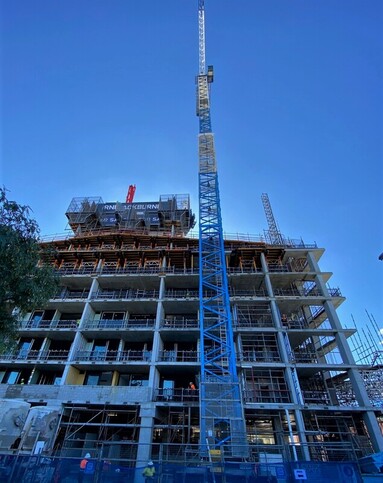



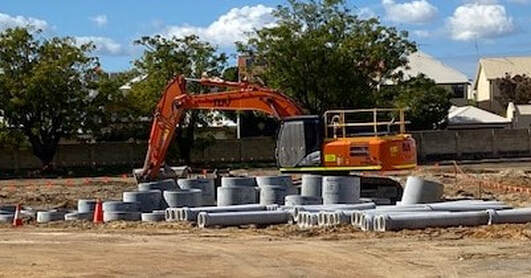
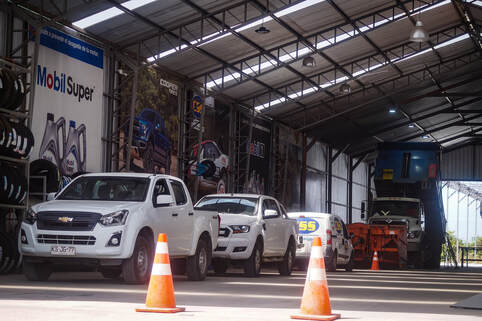
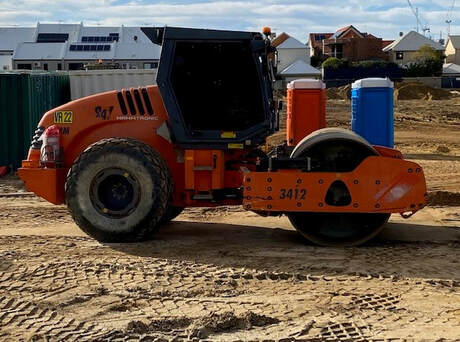
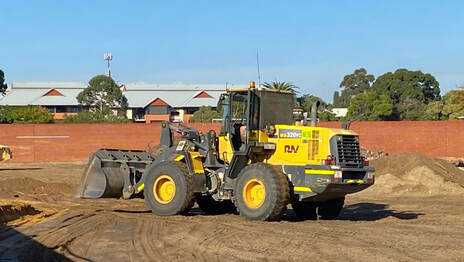
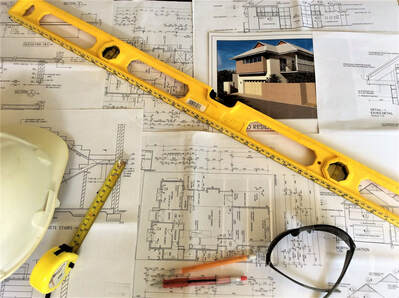
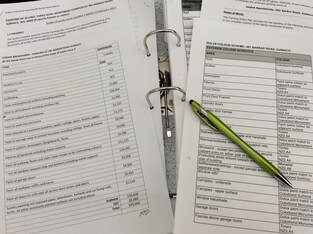

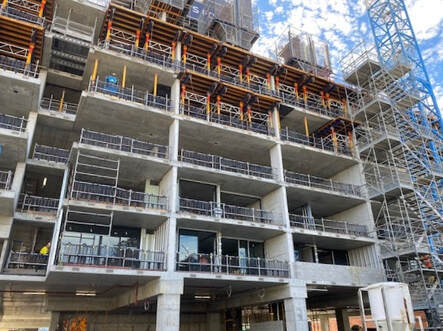
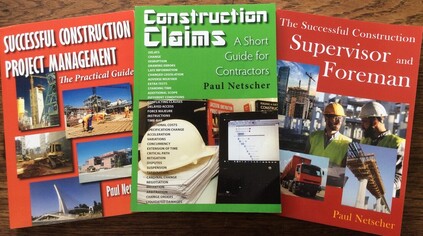




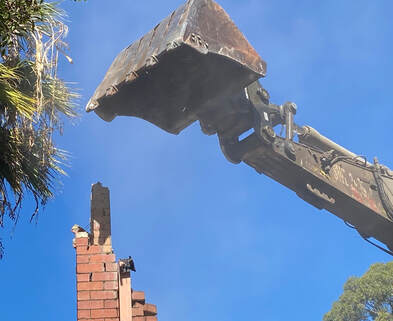
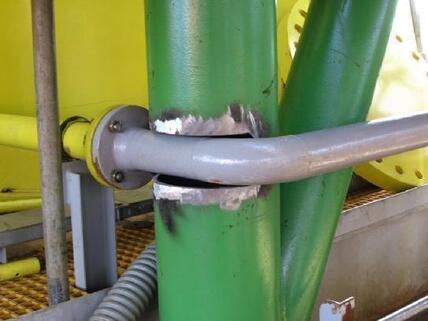
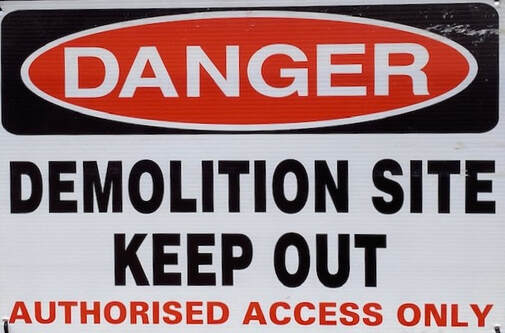
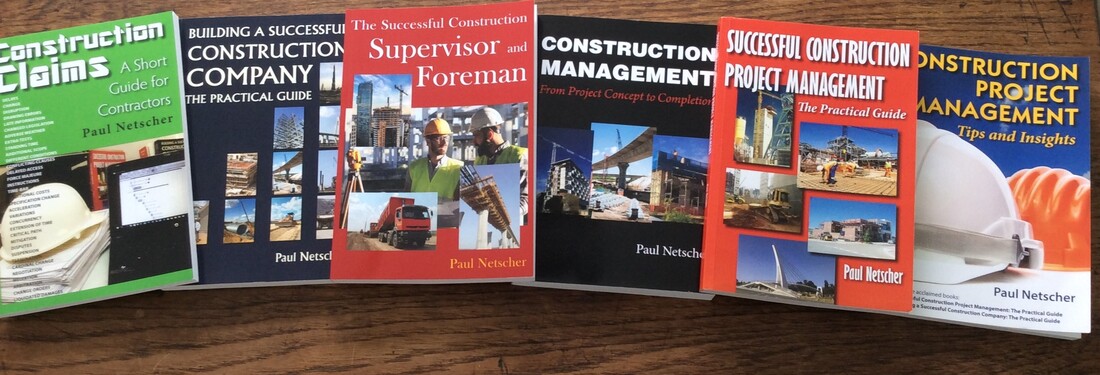
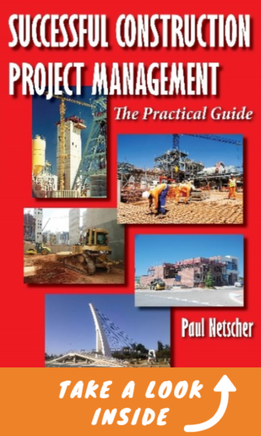


 RSS Feed
RSS Feed




